Basenji Colors Guide (with Photos) and Rare
There are quite a number of features you can use to identify a Basenji; with the most common one being Basenji dog colors.
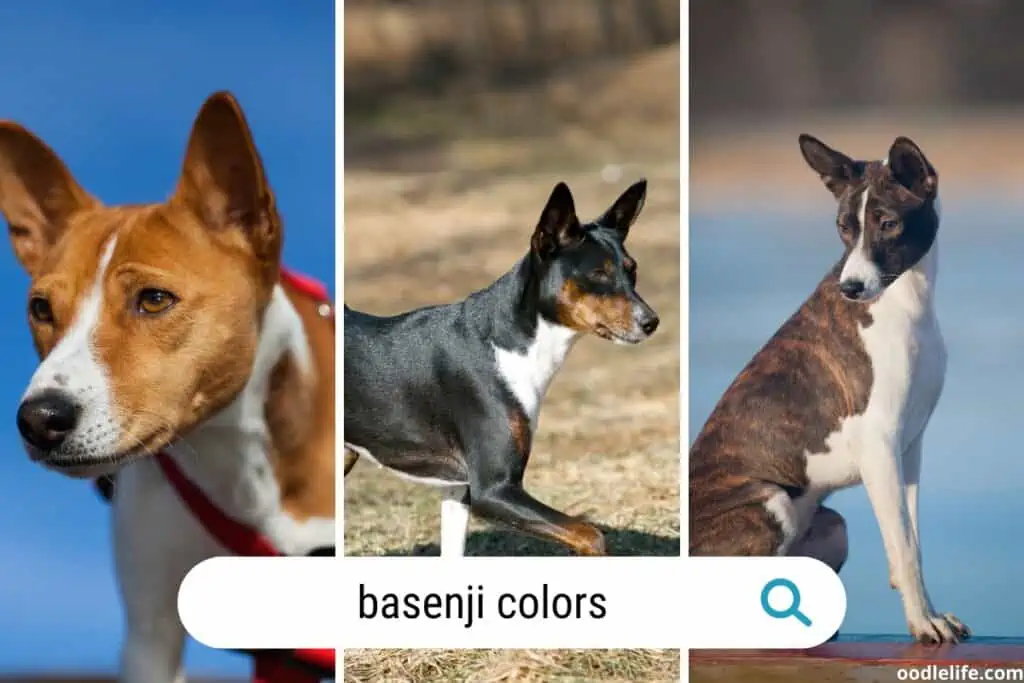
Basenjis come in
- Black
- Chestnut-Red
- Tri-Color
- and Brindle.
This is not to say they are the only colors but in a pool of rainbows through crossbreeds, those four colors can help you identify purebreds.
Basenji Color Outlaws
In as much as the word suggests a certain disqualification and illegal it is actually not quite the case. There are dog registries world wide some at the national level while others are international e.g. the United Kennel Club (UCK). Their main focus is to keep tabs on all things dogs. Mainly they have official lists on all the types of dogs grouping them by their specific breed through their known parents.
It is such organizations that keep records on how a breed came to be and what constitutes it as a purebred. So basically when it comes to purebred Bs they have four main colors in their registries; deeming the rest as possible crossbreed.
The Permanent White Trademark
Every Basenji no matter the color has a trademark look to it which is the white color on its chest, feet and tail tip. The white on its legs, blaze and collar are however optional. It should be noted that this white color of the Basenji should never predominate any of the primary colors. So you can have a certain type of Basenji with a lot of white classified as flashy to the ones with minimum white classified as plain.
Pure Blacks
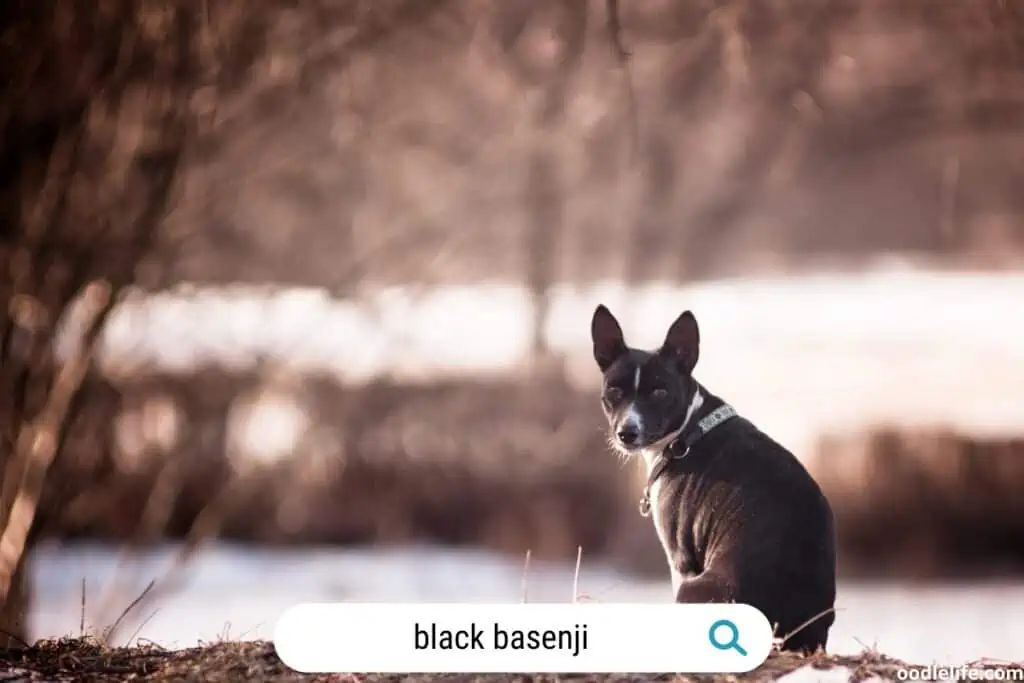
With Bs that are labelled as pure black their coat is predominantly black with white on the parts mentioned above. The black is dark without a hint of any other color and glossy in contrast to the white that is really bright, vivid and clearly defined.
Pure black Basenjis are heterozygous for that trait meaning they have a recessive color that isn’t expressed because of the dominant black characteristic. So, two pure blacks can breed, for example, a Tri-Color Basenji puppy.
Chestnut-Reds
This is one of the most common colors to be found on a Basenji. The Red is so rich, vibrantly saturated and deep; some people might even mistake it for orange.
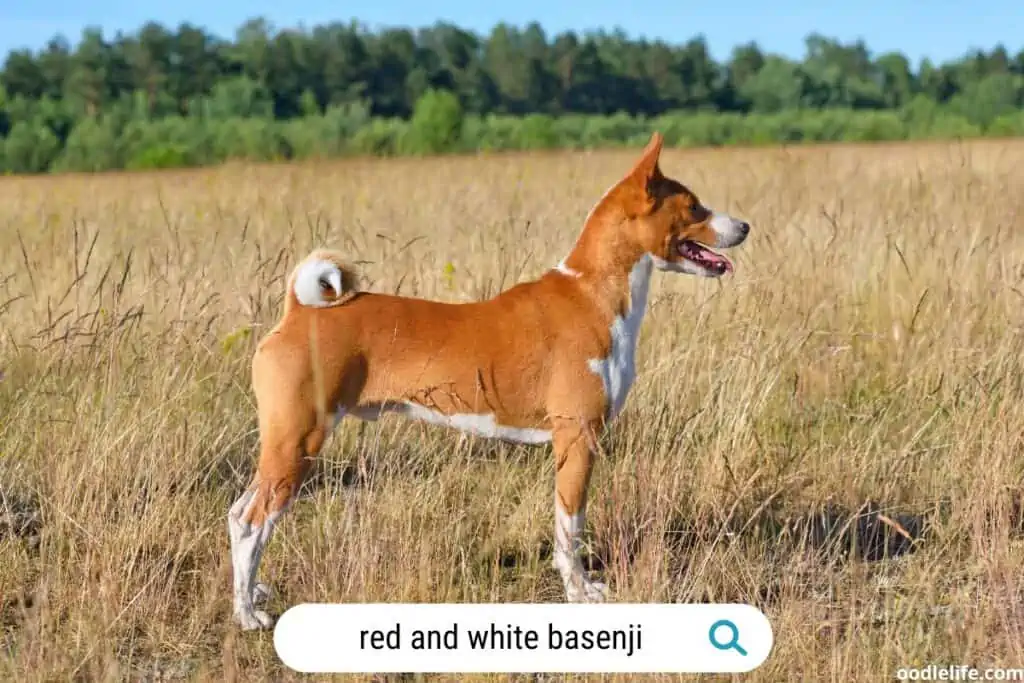
And in pale dogs depending on their location’s weather or other factors the color has been described to be a bit on the tan side. It goes without saying that there are many shades within this color stemming from different factors.
This Chestnut-Red too, as you now know, should be the predominant color on the coat. With white being pure and bright and, also, not having the colors crossing into each other.
Tri-Color Basenji
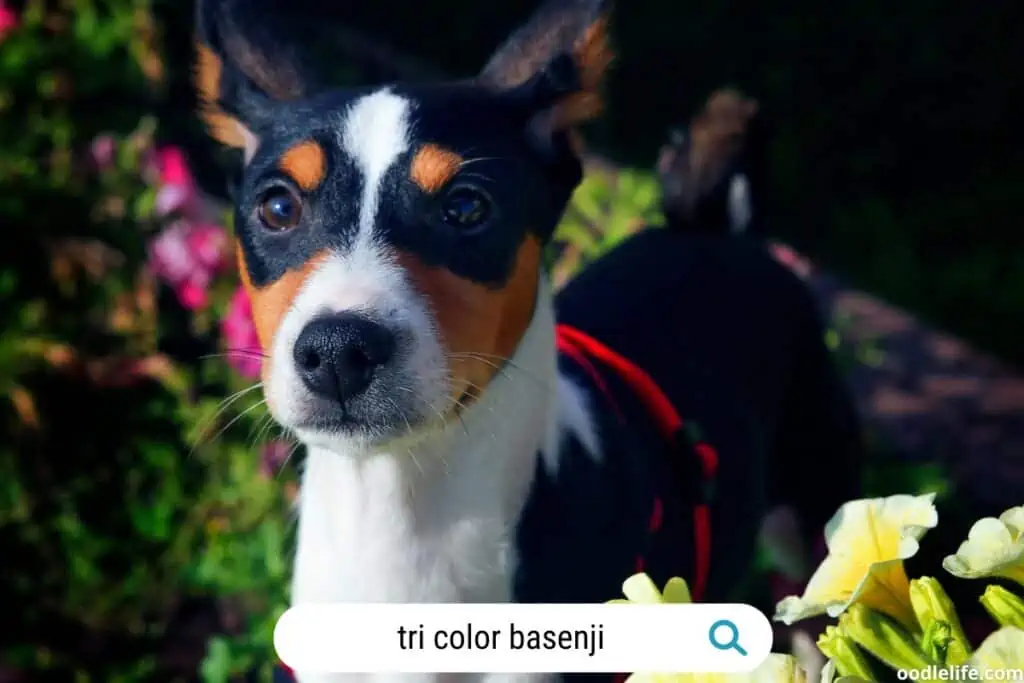
These Basenjis are a combination of black, red and white. Interestingly the white stays on the same spots it is supposed to. These Basenjis mostly have white on the usual places, black and then chestnut-red on their eyebrows, cheeks, inner portion of the upper legs, base of the ears, the inner ear.
Tri-Color Bs are also heterozygous. Meaning if you breed two tri-color Basenjis together you can get black, chestnut-red or brindle Basenji puppies.
Brindle Basenji
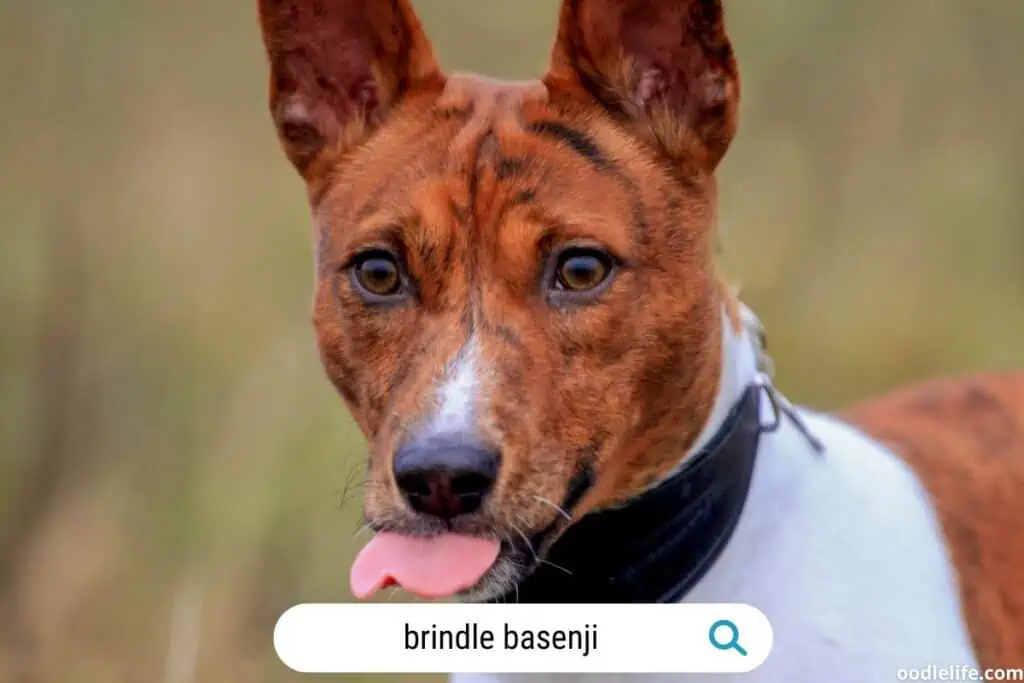
This color in terms of recordings is the newest as it started being recognized by registries in the early 1980s. Brindle Basenjis are known to have distinctive black stripes on a bed of chestnut-red color, with the usual white parts in place.
An interesting fact about brindle colored Bs is if you breed two tri-colors together, you can get a litter of trindle Basenji puppies.
This goes without saying; the brindle Bs also have recessive genes.
Notable Mentions
Here are some “unofficial” purebred Basenji colors that are very rare to come by due to the controlled minimized breeding.
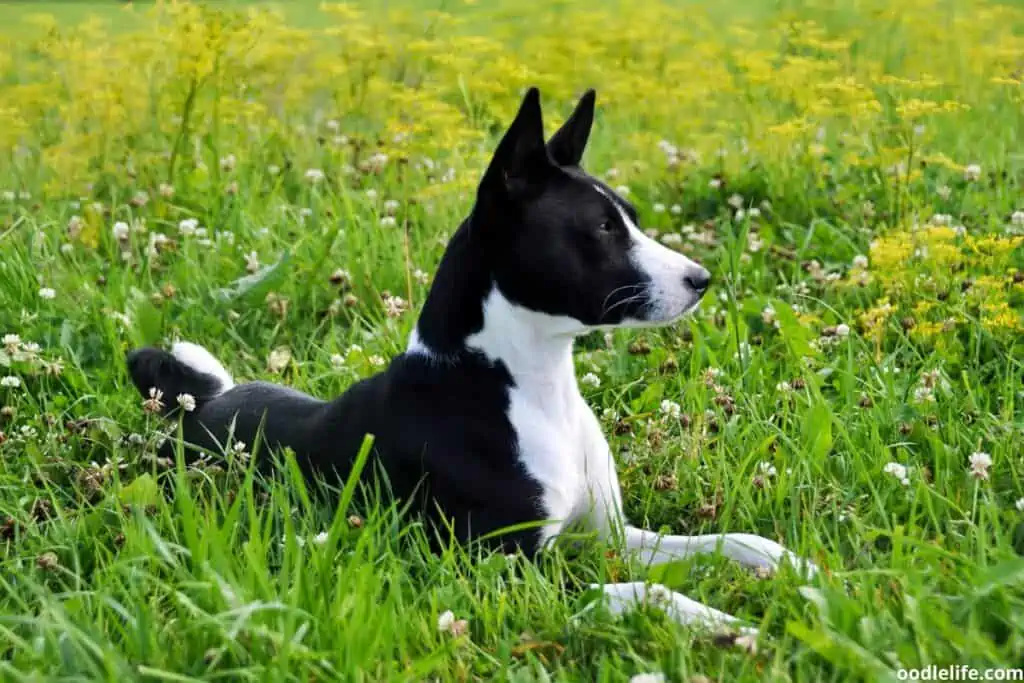
Trindle: Trindle is when a Basenji is tri-color except the chestnut-red areas are replaced by the brindle color.
Sable: These are Basenjis with the chestnut-red coat that has black tips on its fur.
Blue and Cream: These Basenjis have a diluted black coat with cream highlights. The black mixes with the cream gene to create the blue like look.

Mahogany: From having chestnut-red genes that mix with black. These Basenjis have a darker and richer looking coat in the shade of mahogany.
Cream: These Basenjis come about when chestnut-red genes are dominated or replaced by a pale yellow or faint cream coloration.
As you most probably know by now all these colors are accompanied by the standard white color as the permanent feature mentioned before.
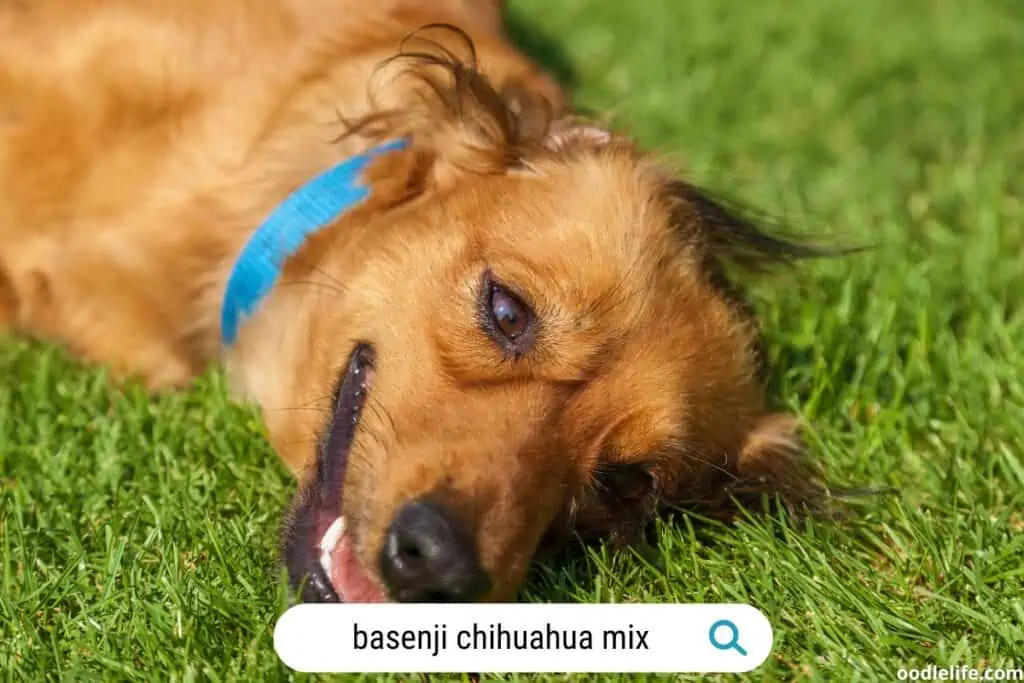
Conclusion
It is always essential to know that Basenjis characters are not influenced by their colors nor do their traits change according to color. As we see more and more colors coming onto the scene through interbreeding, there are some colors that have actually gone extinct in the gene pool.